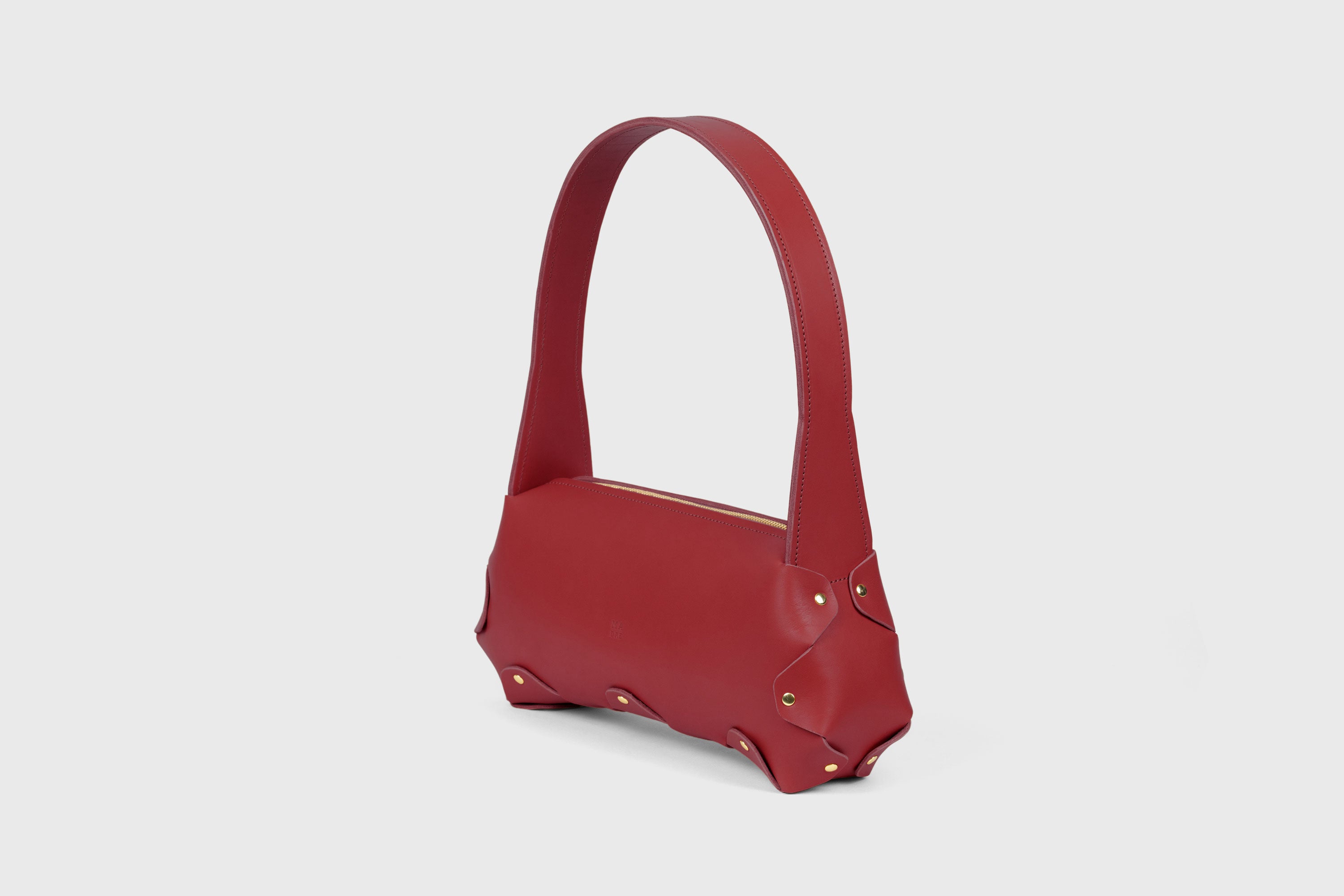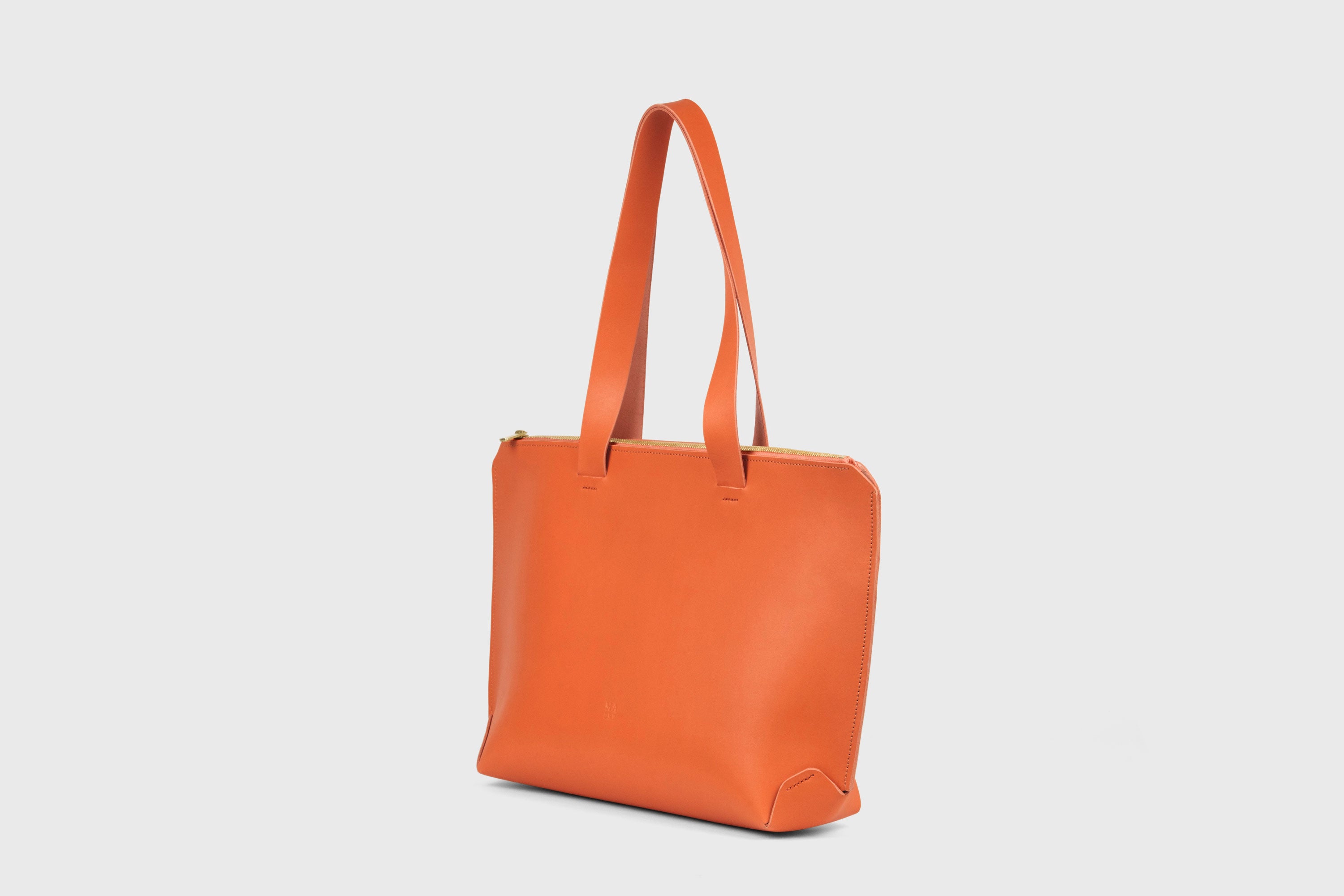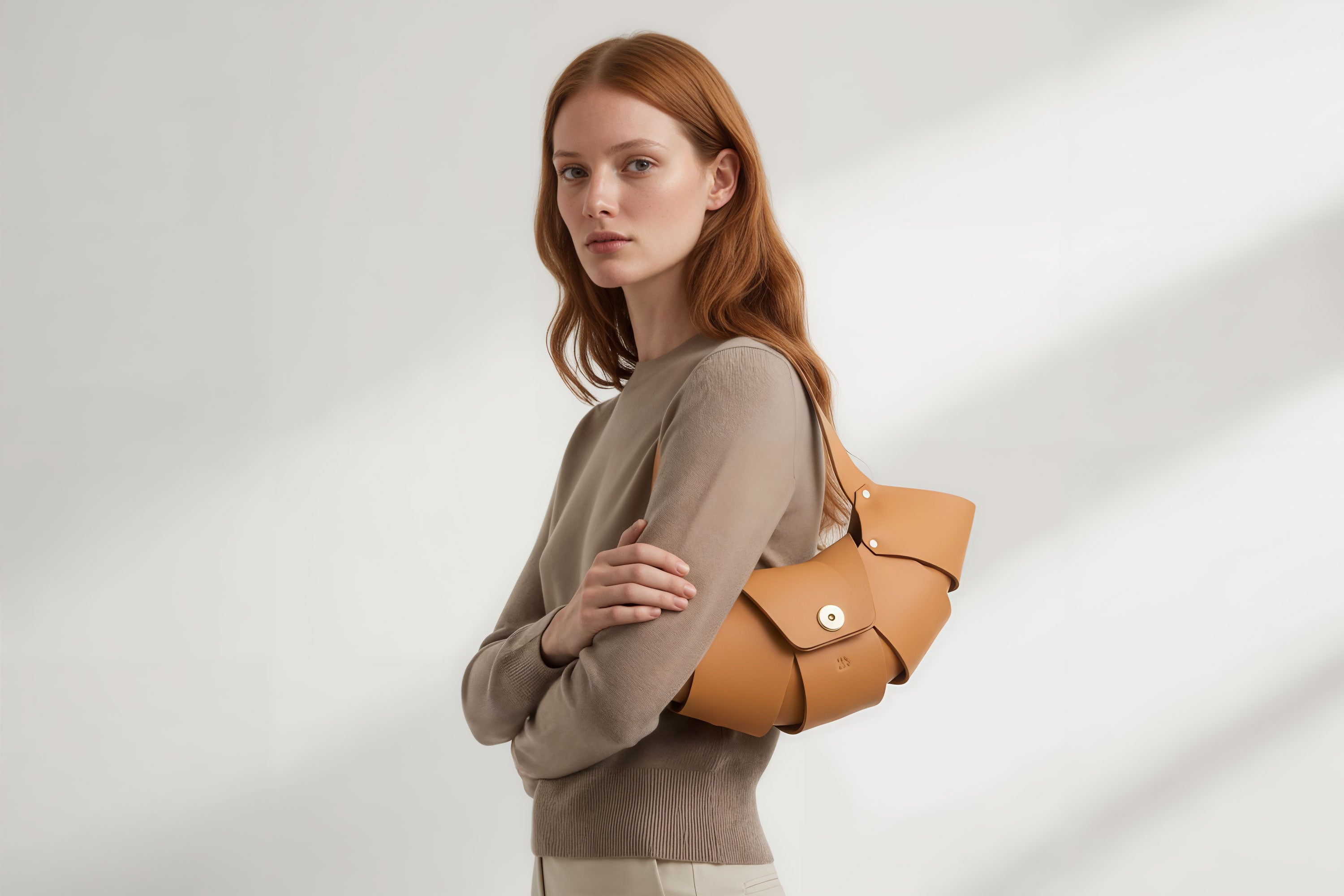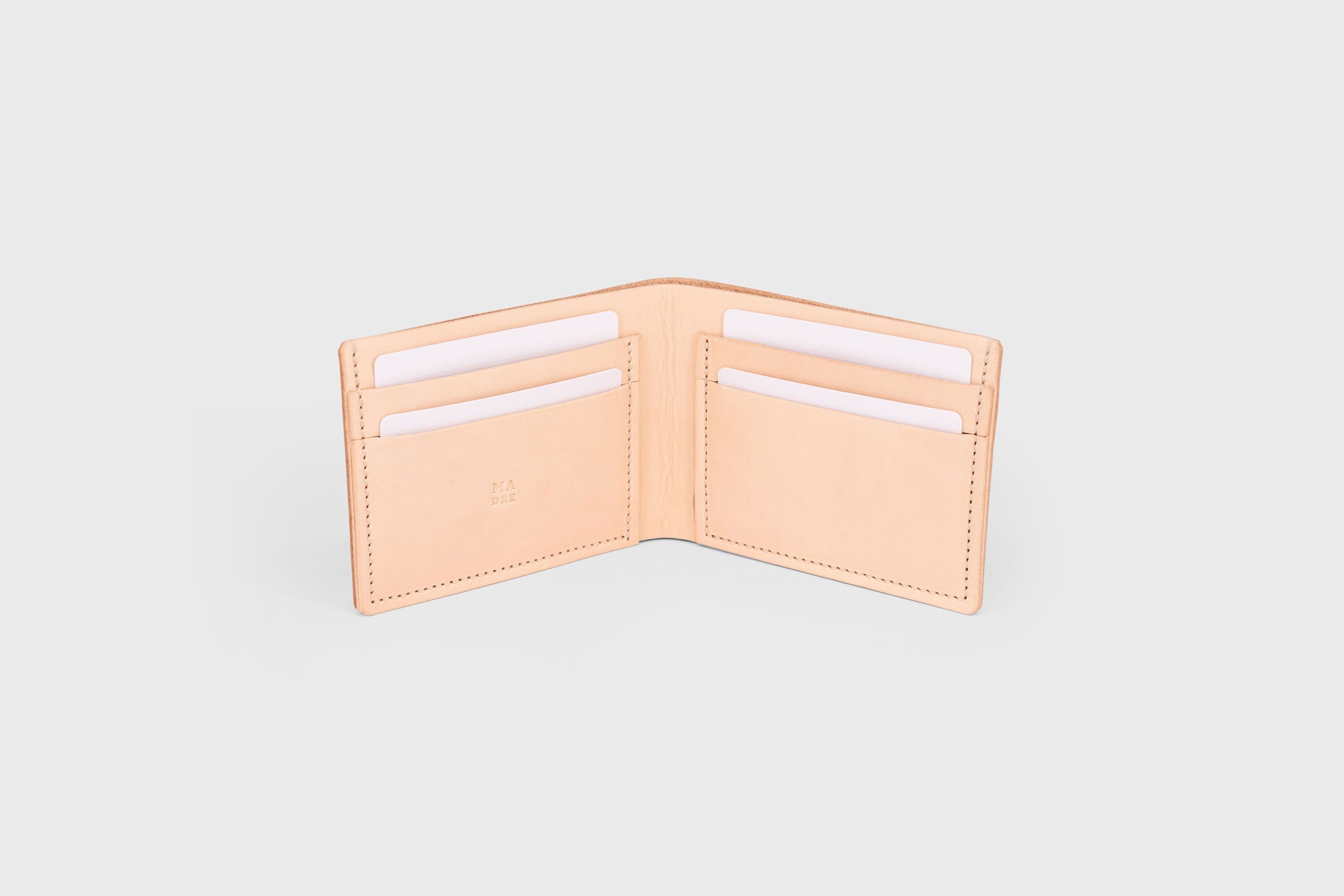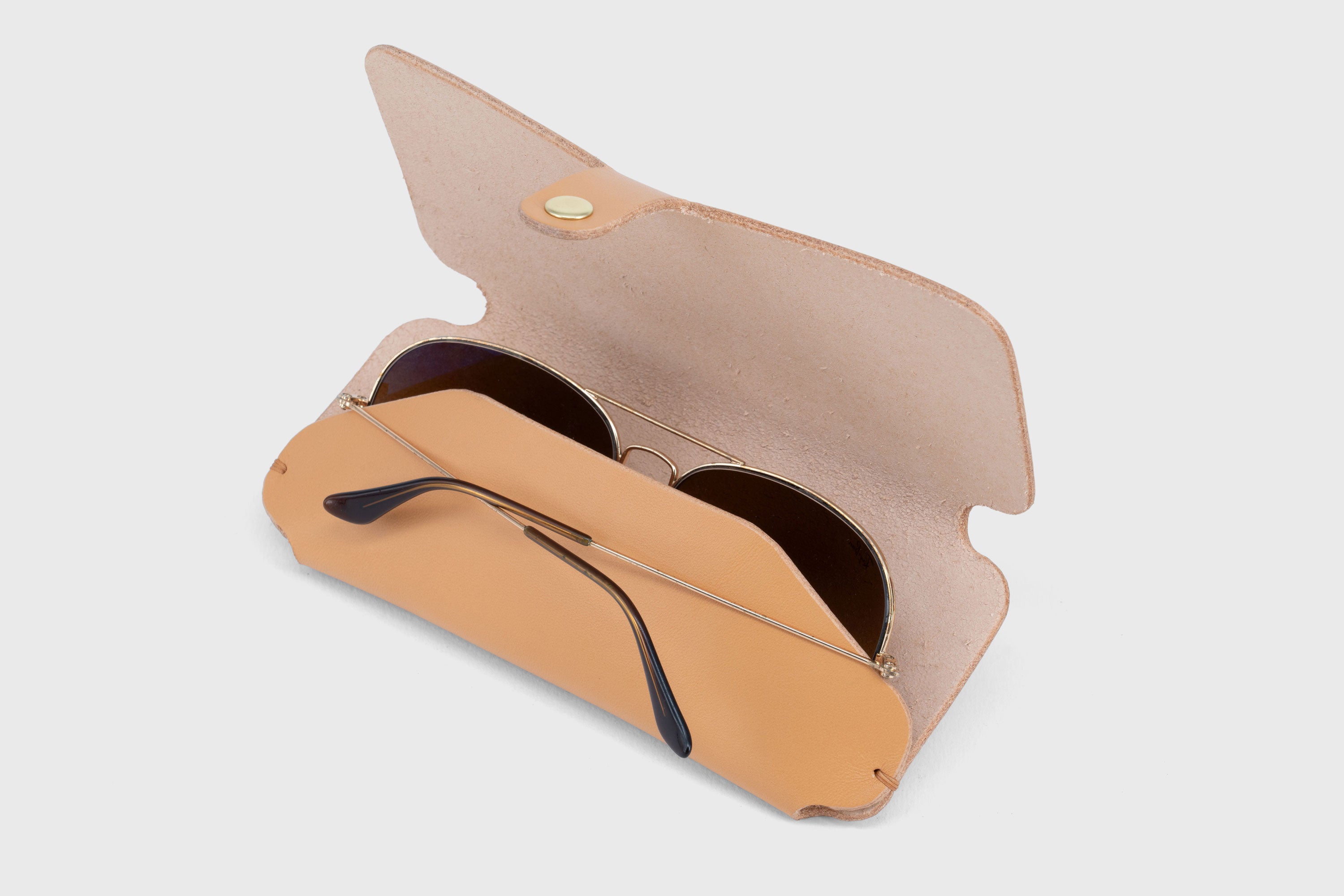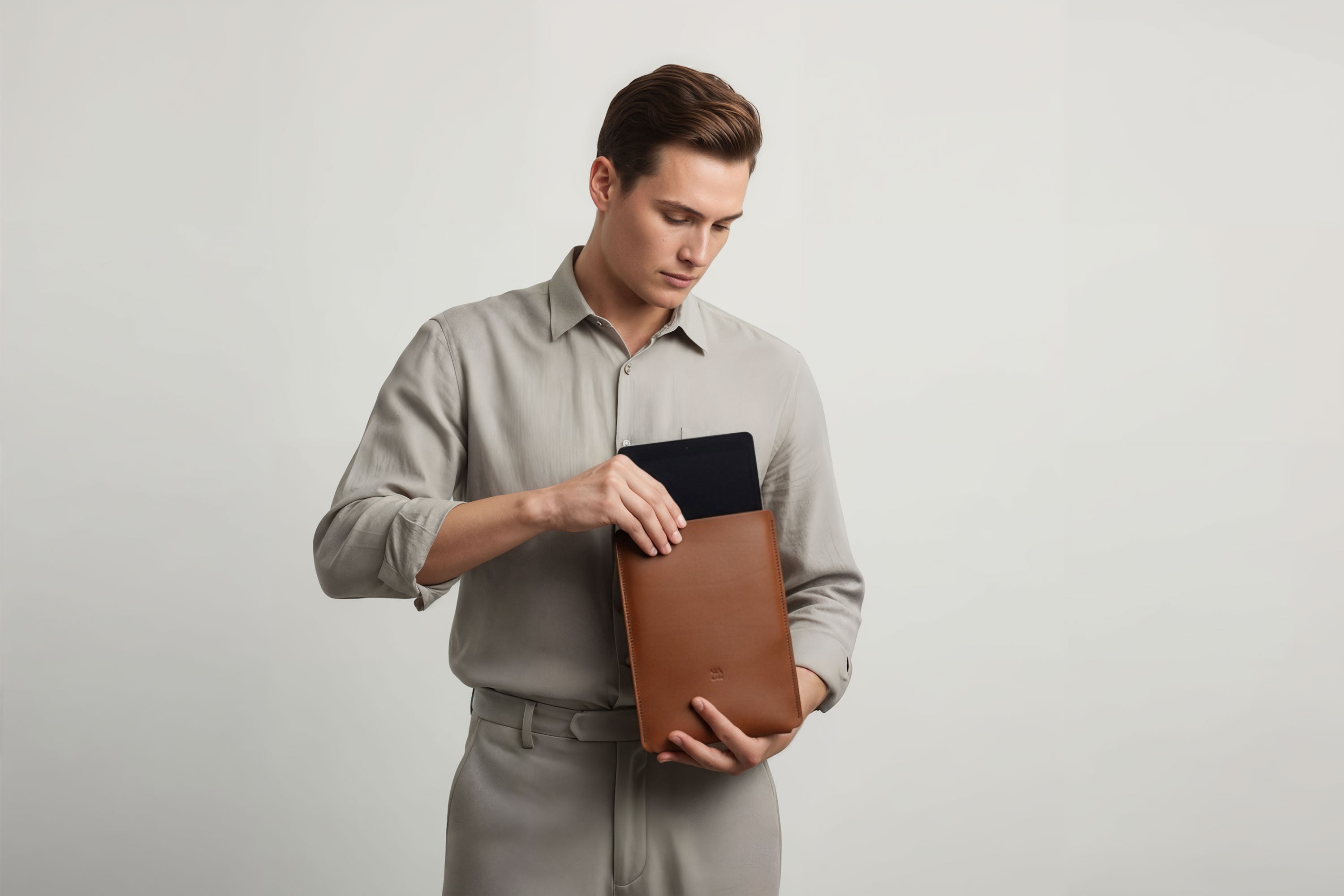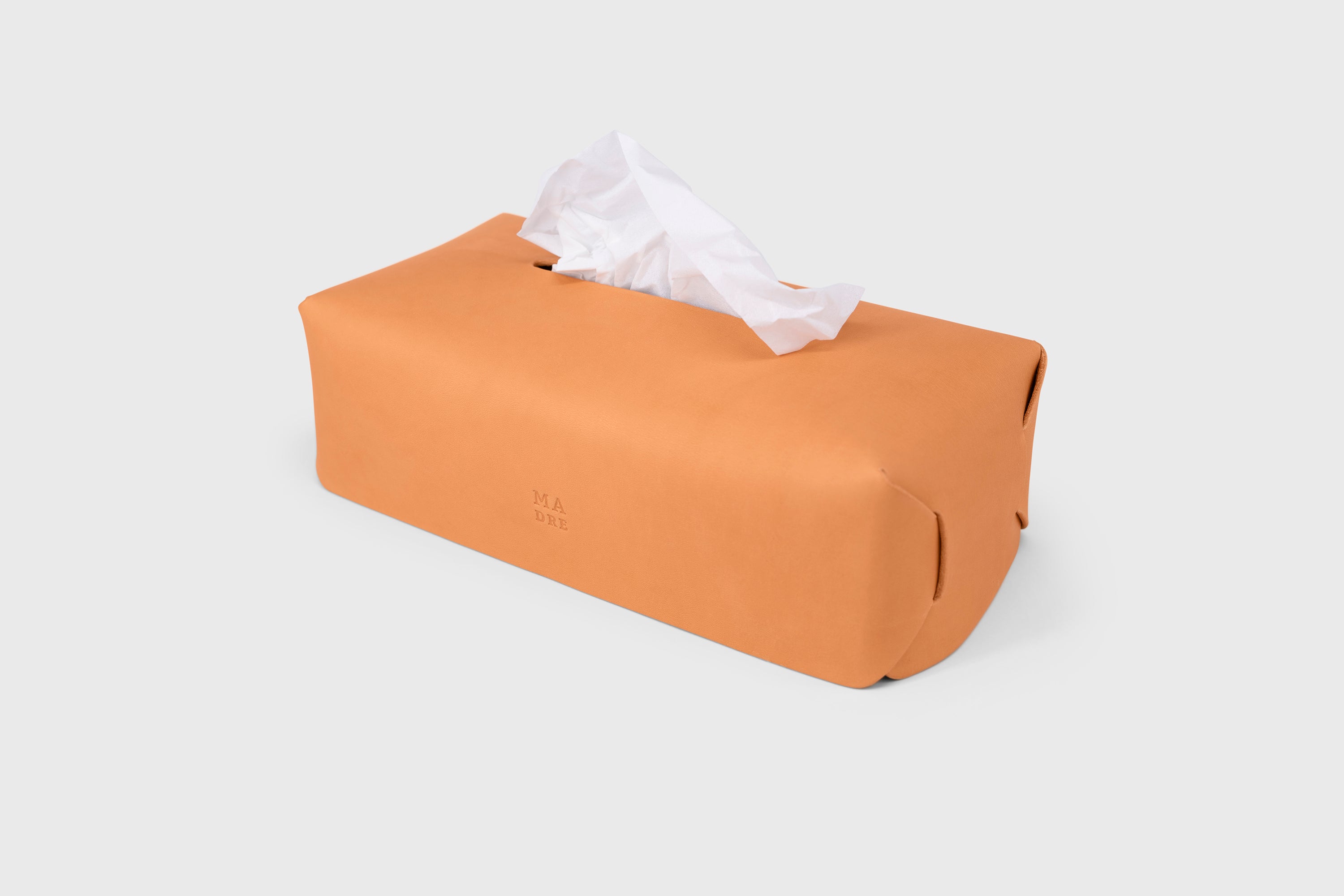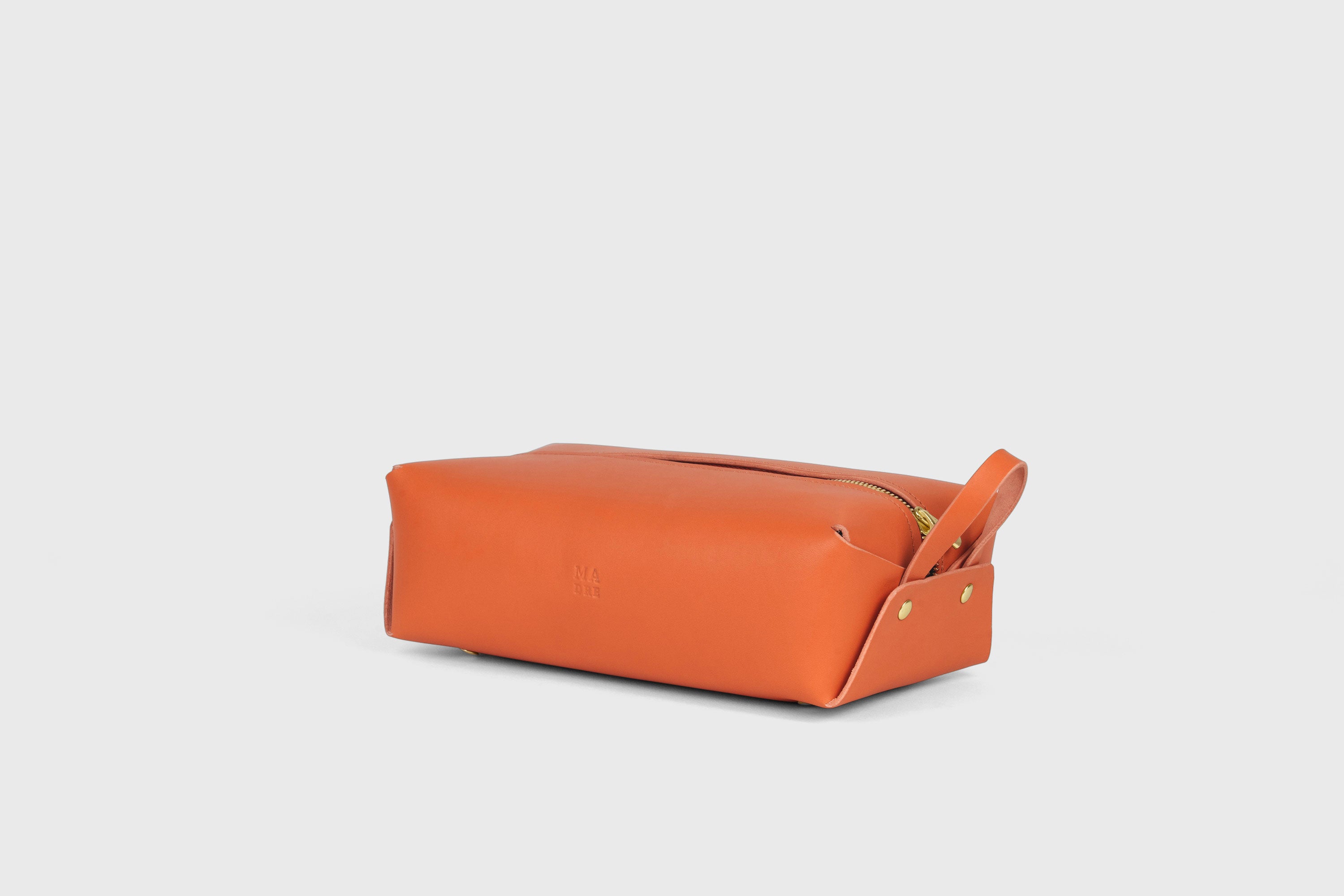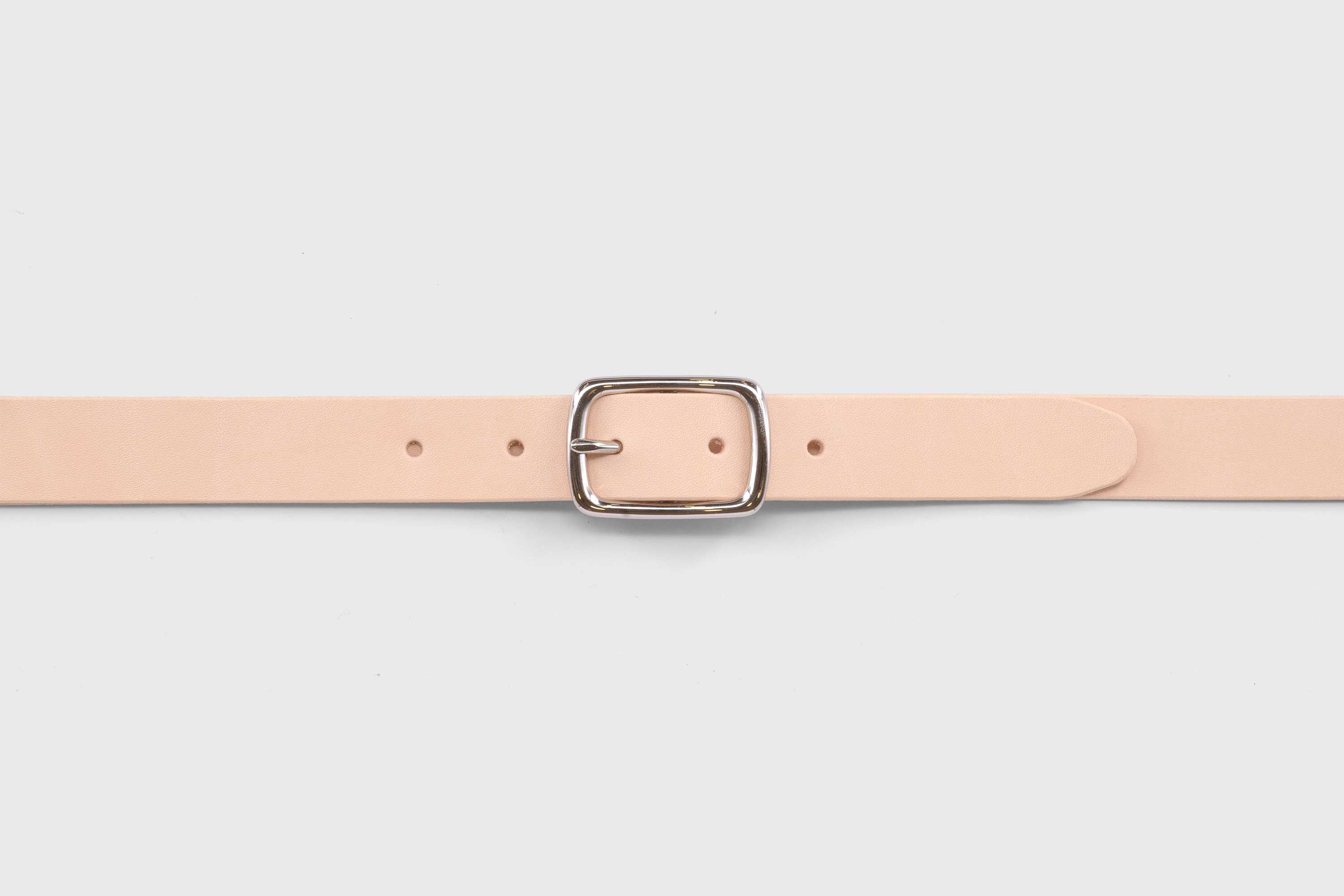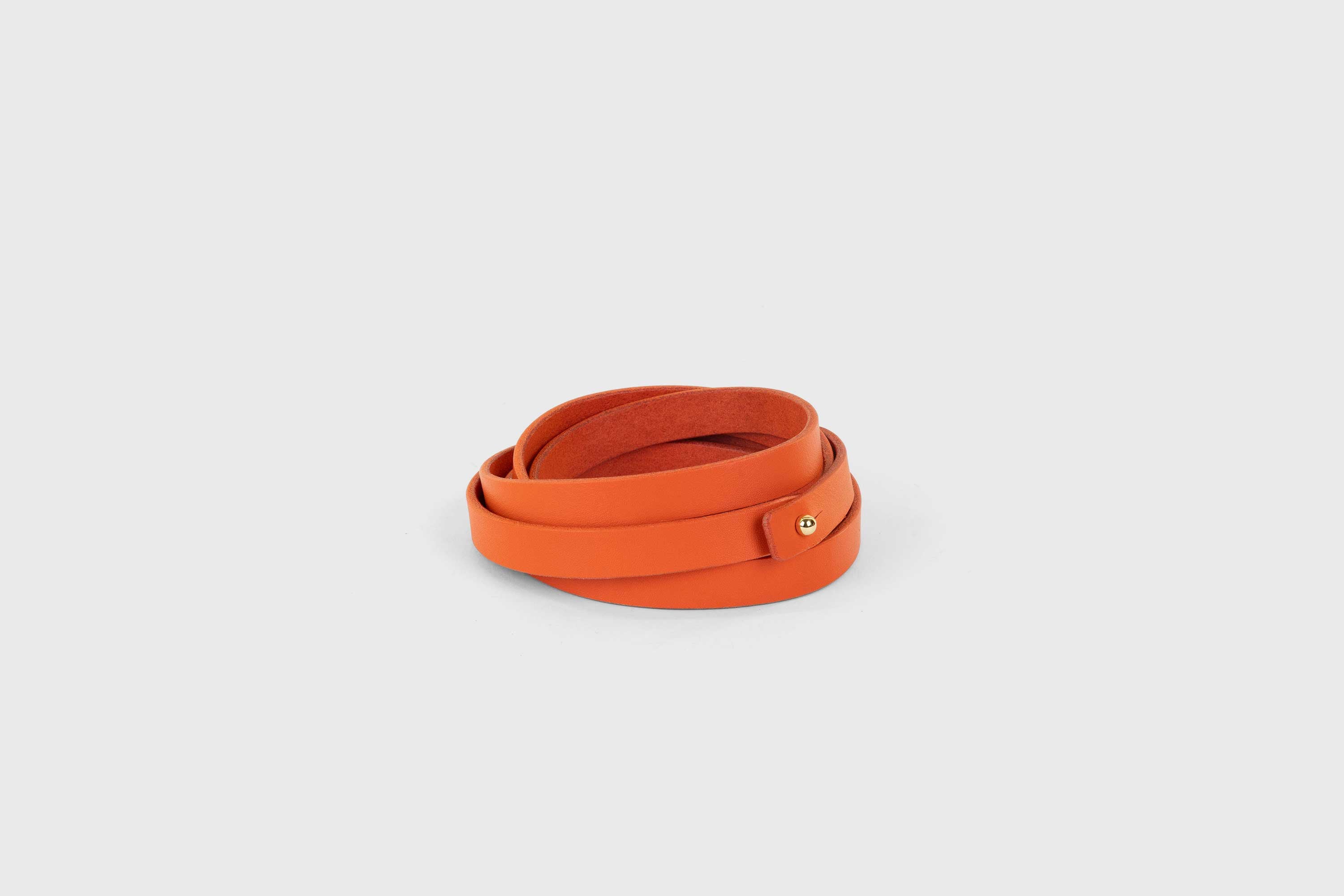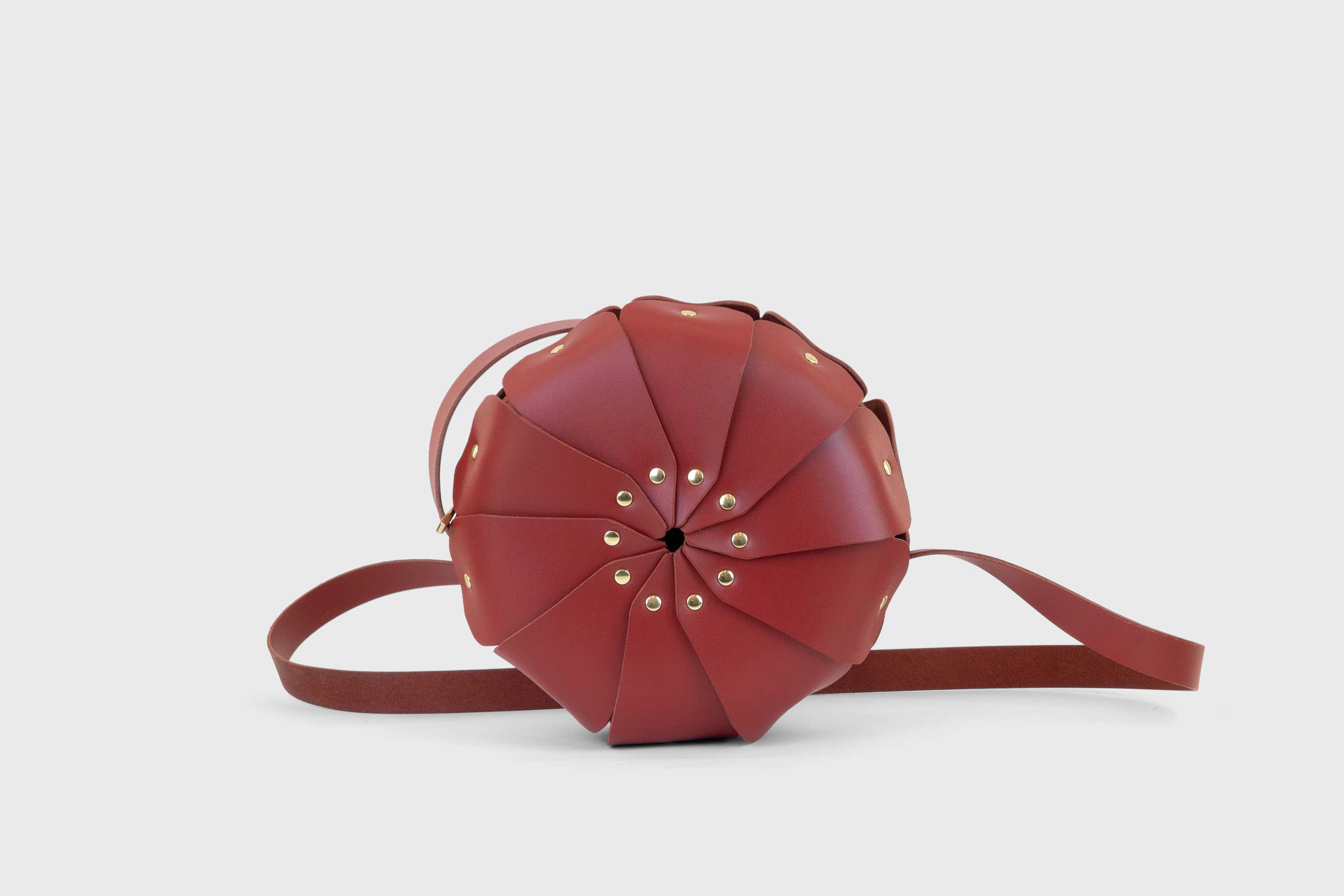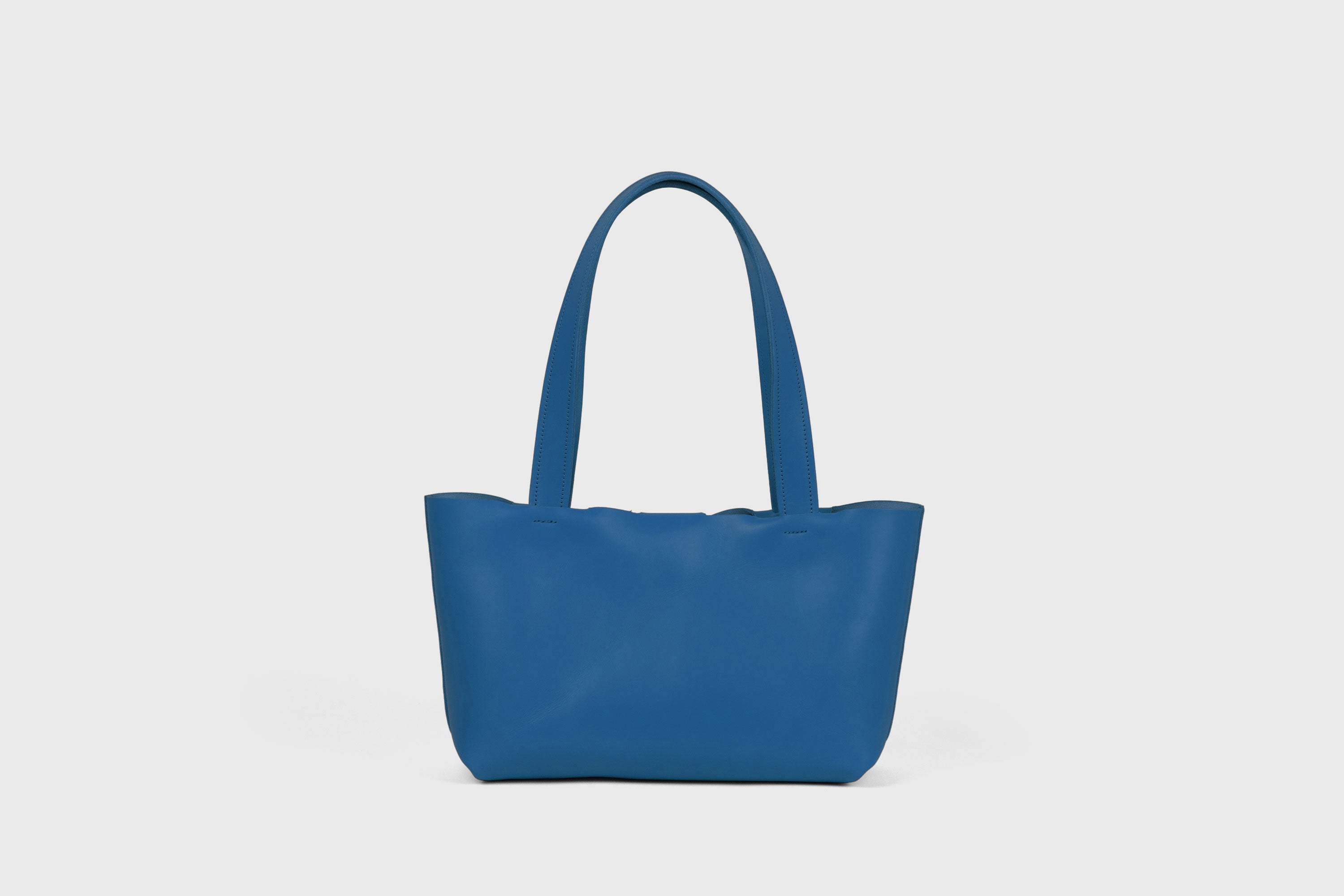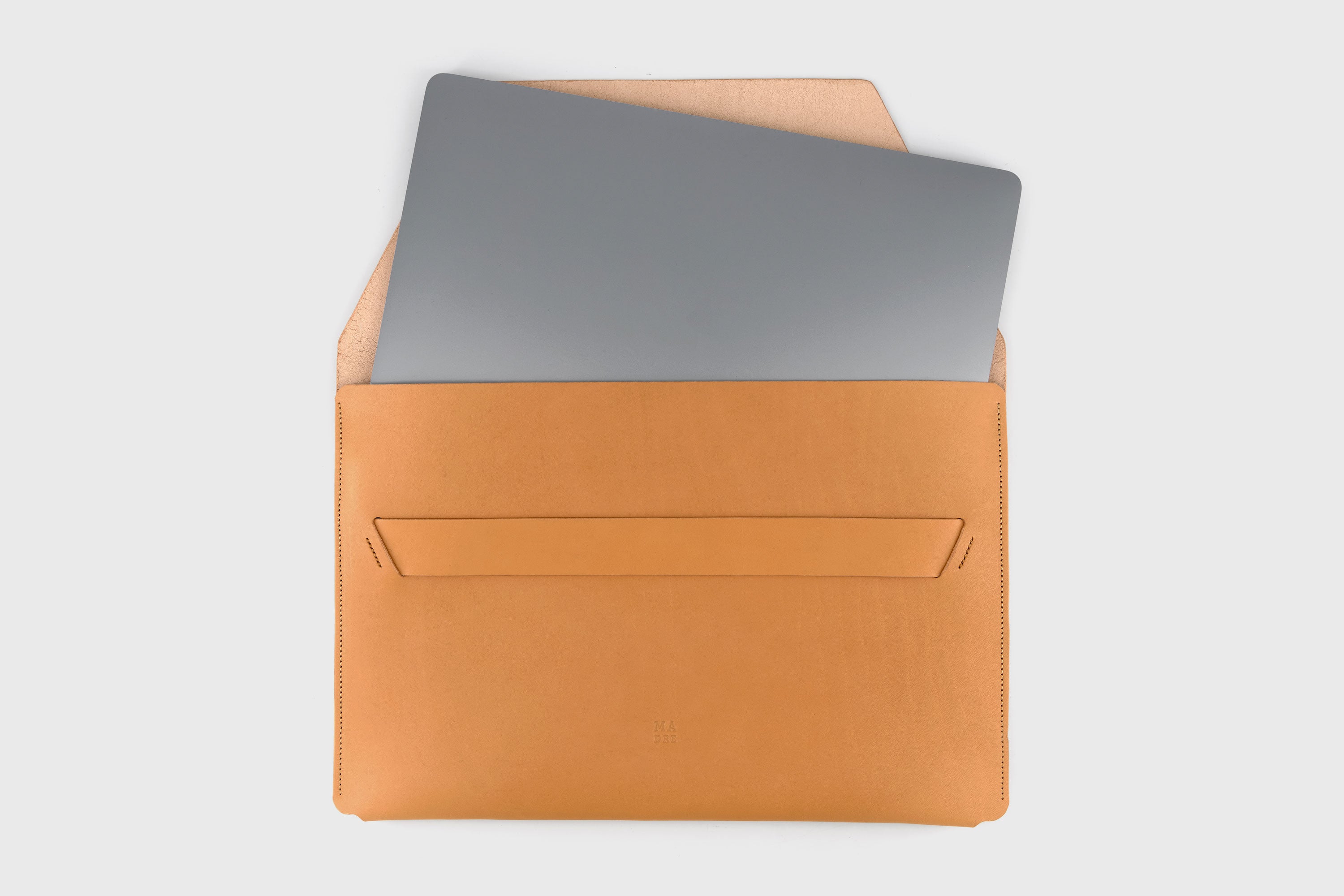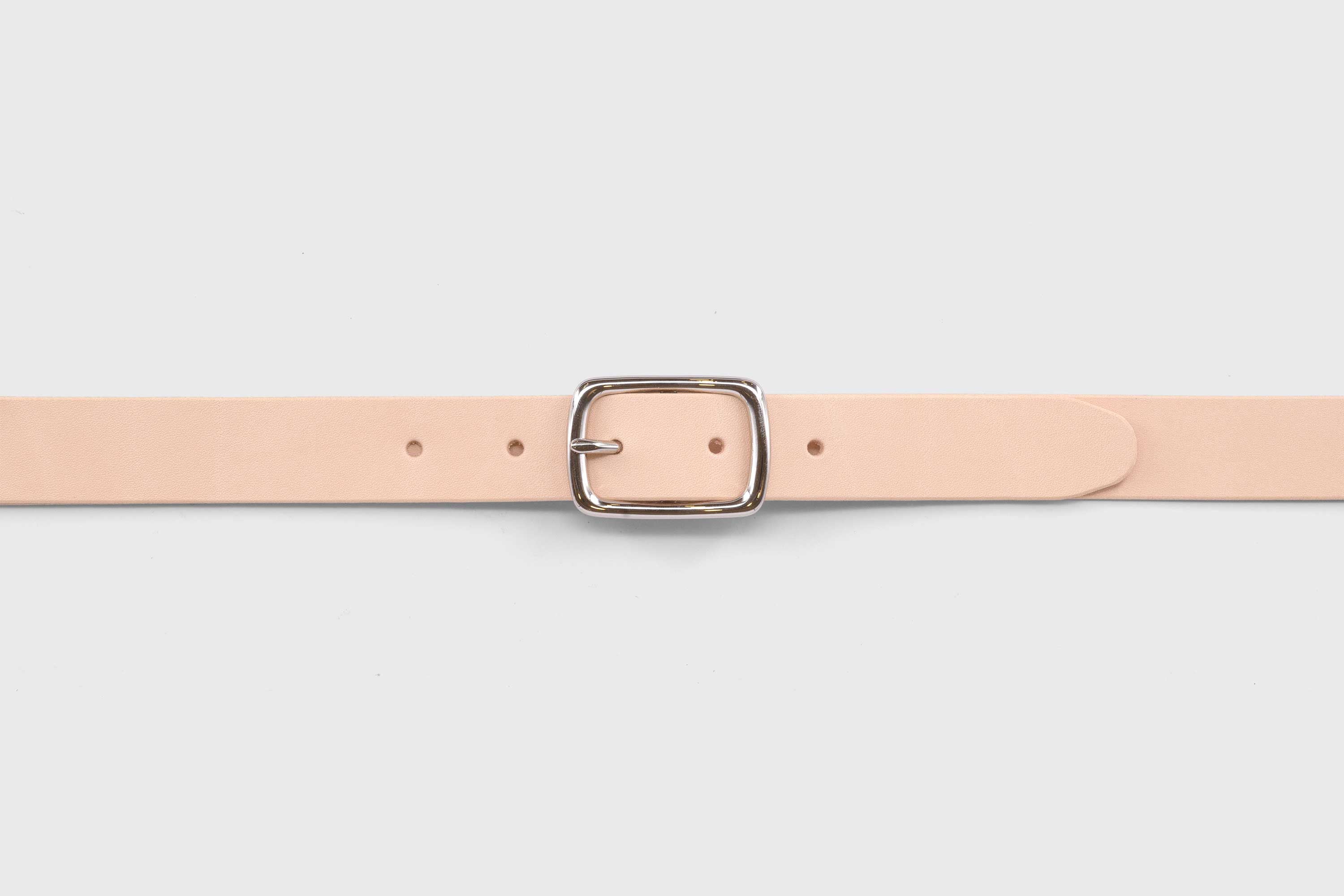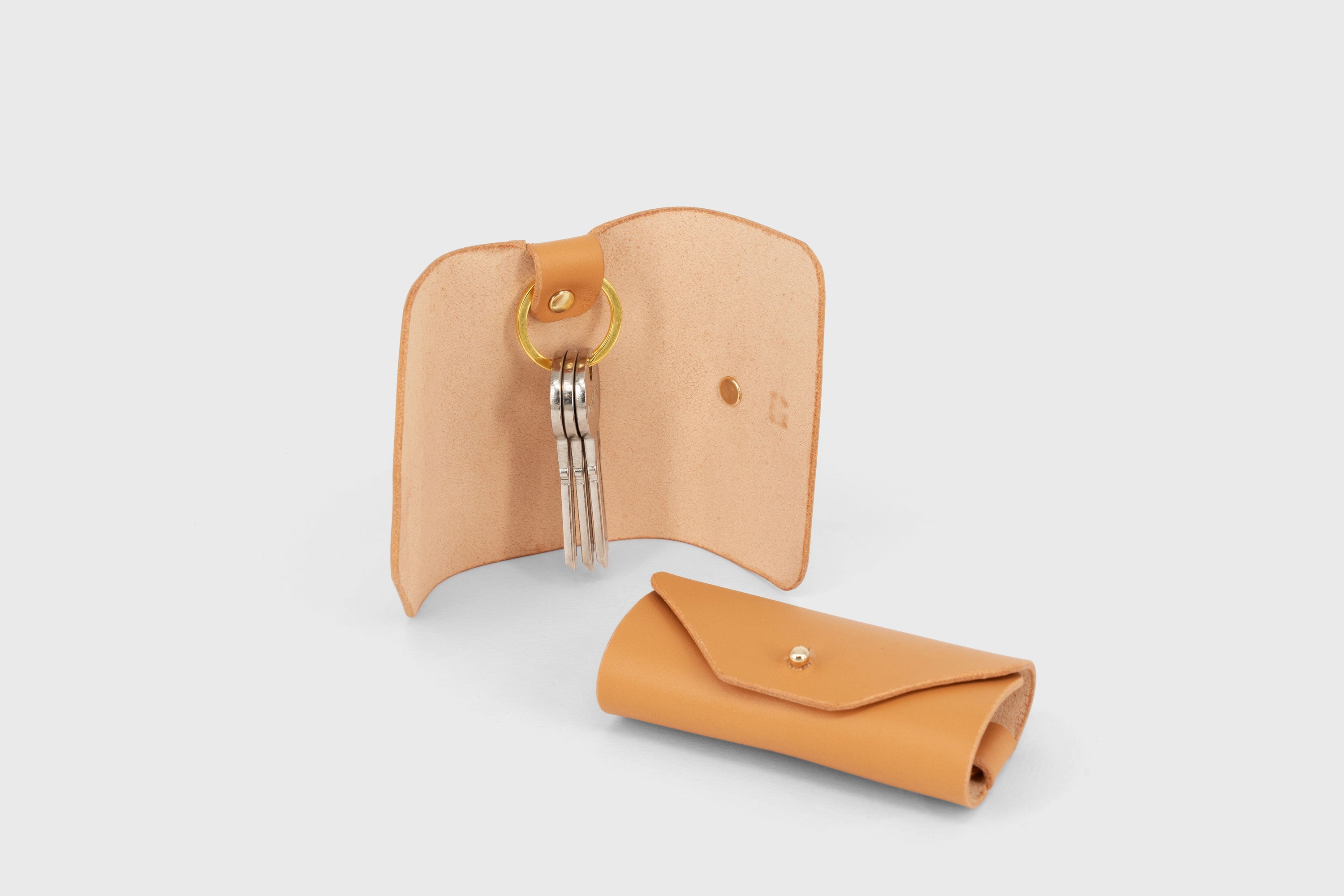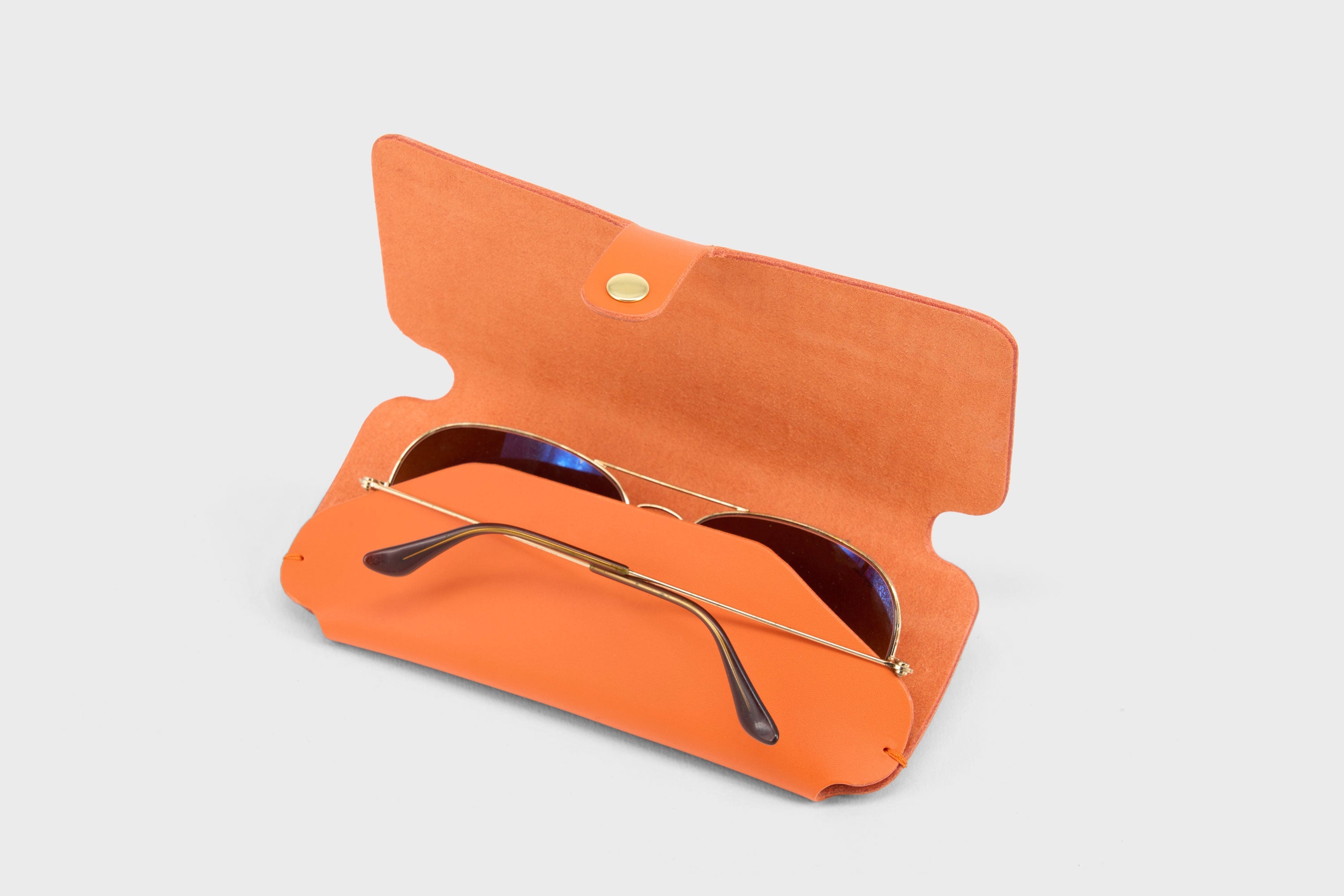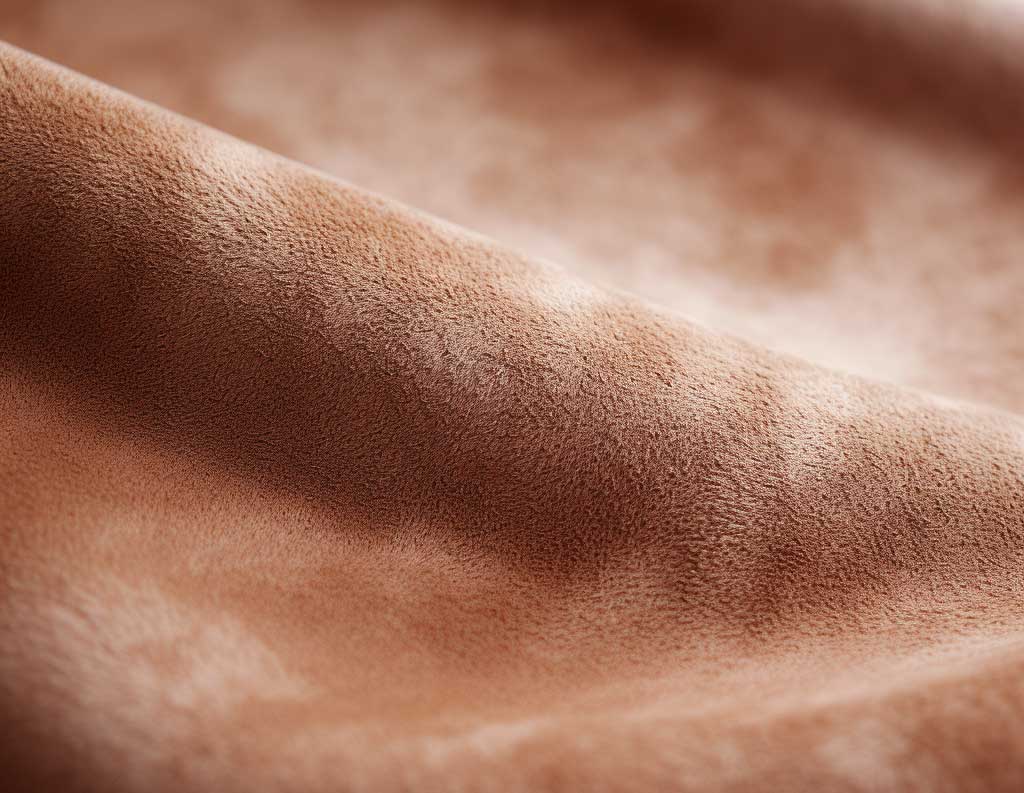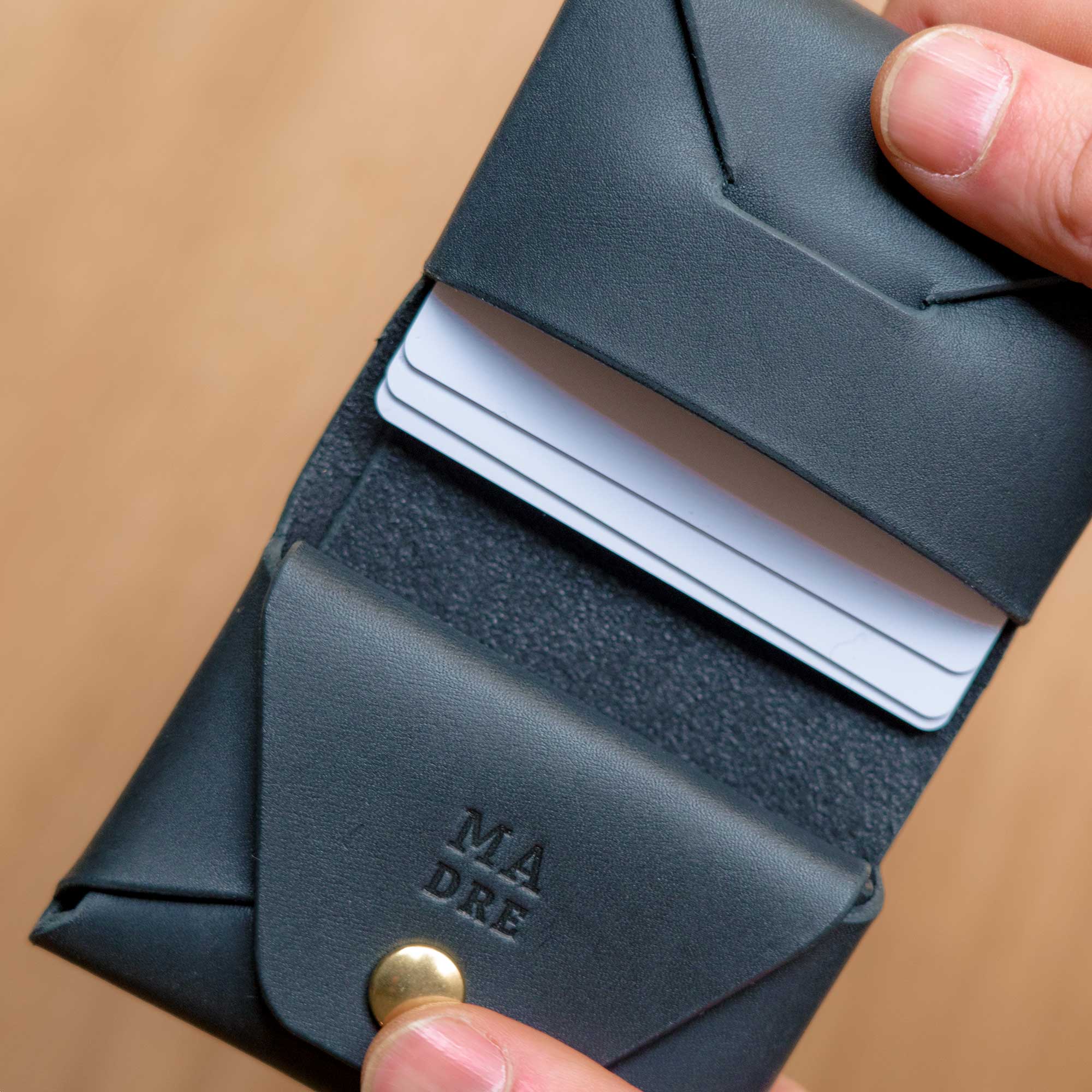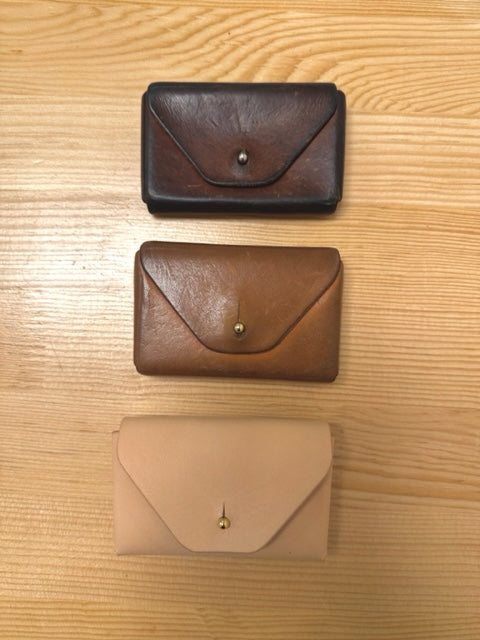
Leather Patina - The Beauty of Age
Leather patina refers to the gradual darkening, softening, and overall change in appearance that occurs over time as leather is exposed to various environmental factors, such as sunlight, oils, and moisture.
As leather ages, it develops a unique character and personality, with the surface becoming smoother and the colors becoming richer and deeper. The patina is a result of the natural process of oxidation and the absorption of oils and other substances, which causes the leather to develop a unique and attractive sheen.
Leather patina is often regarded as a desirable quality, as it adds to the character and individuality of leather products, such as bags, shoes, and jackets. Additionally, the patina can provide protection against wear and tear, as the leather becomes more supple and resistant to cracking and breaking over time.
How long does it take for leather to develop a patina?
The development of leather patina is a natural and gradual process that occurs as leather is exposed to various environmental factors. Many factors affect the rate at which leather develops patina, including the type of leather, frequency of use, and how it is cared for.
On average, it can take anywhere from 6 months to several years for leather to develop a visible patina. The length of time varies depending on the type of leather and how often it is used. For example, full-grain leather tends to develop patina faster than corrected grain leather because it is not treated with artificial coatings and finishes that inhibit the natural aging process.
Furthermore, the development of patina can be accelerated by exposure to natural light, heat, and moisture. Oils from the skin and environment are absorbed into the leather, which adds to the patina and gives the leather a unique, lived-in look.
Leather patina is not only aesthetically pleasing, but it also adds to the durability and longevity of leather goods. As leather develops patina, it becomes more supple, resistant to cracking, and better able to withstand wear and tear.
It is worth noting that the development of patina is not necessarily an indication of quality leather. Even low-quality leather can develop patina over time. However, quality leather tends to develop patina more evenly and consistently, with fewer signs of cracking or damage.
In conclusion, the development of leather patina is a natural and desirable process that takes anywhere from 6 months to several years to occur. Proper care and maintenance are essential to ensure that leather develops a beautiful and long-lasting patina.
What factors contribute to the development of leather patina?
The development of leather patina is a natural process that occurs over time as leather is exposed to various environmental factors. Here are some of the most common factors that contribute to the development of leather patina:
-
Use: Regular use of leather products, such as bags, shoes, or jackets, is one of the main factors that contribute to the development of patina. As leather is worn, it becomes softer and smoother, and the colors become richer and more complex.
-
Exposure to natural light: Exposure to natural light can cause the leather to darken and change color over time. However, prolonged exposure to direct sunlight can cause the leather to fade or become discolored.
-
Oils: The oils from the skin and other environmental factors can be absorbed into the leather, which adds to the patina and gives the leather a unique, lived-in look.
-
Moisture: Moisture can cause the leather to darken and change color. However, excessive moisture can also cause the leather to become brittle and prone to cracking.
-
Heat: Heat can accelerate the natural aging process of leather, causing it to dry out and develop a patina more quickly.
-
Chemical treatments: The type of tanning process and chemical treatments used on the leather can affect the rate at which it develops patina. For example, vegetable-tanned leather is known to develop a patina more quickly than chrome-tanned leather.
In conclusion, the development of leather patina is a natural and desirable process that is influenced by various environmental factors. Regular use, exposure to natural light, oils, moisture, heat, and chemical treatments all contribute to the development of leather patina. Proper care and maintenance can help prolong the life of leather products and enhance the beauty of the patina.
What are the characteristics of a good leather patina?
The characteristics of a good leather patina can vary depending on personal preferences and the type of leather. However, here are some general characteristics that are often associated with a good leather patina:
-
Evenness: A good leather patina should be even and consistent, with a smooth and natural appearance. Uneven or blotchy patina may be an indication of poor-quality leather or improper care.
-
Richness: A good leather patina should have a rich and attractive color, with depth and complexity that adds to the character and personality of the leather.
-
Suppleness: A good leather patina should be supple and smooth to the touch, with no signs of cracking or brittleness. The leather should feel soft and comfortable, even after many years of use.
-
Uniqueness: A good leather patina should be unique and individual, reflecting the particular use and care of the leather over time. No two leather goods with patina should be exactly the same, adding to their character and charm.
-
Protection: A good leather patina should help to protect the leather from wear and tear, extending the life of the leather goods and making them more durable and long-lasting.
In conclusion, a good leather patina should be even, rich, supple, unique, and protective. These characteristics can add to the beauty and value of leather goods, making them functional, stylish, and long-lasting.
How can I speed up the patina process on my leather goods?
If you want to speed up the patina process on your leather goods, there are a few things you can do:
-
Use your leather goods regularly: The more you use your leather goods, the faster they will develop a patina. Regular use will cause the leather to soften, become smoother, and develop a unique character and personality.
-
Expose your leather goods to natural light: Natural light can cause the leather to darken and change color more quickly. However, you should be careful not to expose your leather goods to direct sunlight for extended periods, as this can cause fading or discoloration.
-
Apply leather conditioner: Applying a high-quality leather conditioner can help soften and moisturize the leather, which can speed up the patina process. However, it's essential to choose a conditioner that is appropriate for your specific type of leather.
-
Use leather oil: Leather oil can help speed up the patina process by moisturizing and nourishing the leather. Be careful not to overapply, as this can cause the leather to become too oily and attract dirt and dust.
-
Handle your leather goods with clean hands: Oils and dirt from your hands can be absorbed into the leather, which can help speed up the patina process. However, you should always handle your leather goods with clean hands to avoid transferring any dirt or oil onto the leather.
It's important to note that while these methods can help speed up the patina process, they should be used with caution. Overexposure to natural light or excessive use of oils and conditioners can cause the leather to become damaged or discolored. It's essential to care for your leather goods properly to ensure they develop a beautiful and long-lasting patina.
Why do different types of leather age differently?
Different types of leather age differently due to variations in the tanning and finishing processes used to produce the leather, as well as the specific environmental factors to which the leather is exposed over time.
For example, full-grain leather is generally more susceptible to developing a rich and attractive patina than corrected-grain leather, due to the absence of artificial coatings and finishes that inhibit the natural aging process. Vegetable-tanned leather is also known to develop patina more quickly than chrome-tanned leather, due to the natural tanning process.
In addition to the type of leather, the specific environmental factors to which the leather is exposed can also affect how it ages over time. Exposure to natural light, heat, and moisture can cause the leather to darken or change color, while excessive exposure can cause the leather to become brittle or damaged. The oils and waxes from the skin, sweat, and other environmental factors can also be absorbed into the leather, adding to the patina and giving the leather a unique, lived-in look.
In conclusion, different types of leather age differently due to variations in the tanning and finishing processes used to produce the leather, as well as the specific environmental factors to which the leather is exposed over time. Understanding these factors can help you choose the right type of leather for your needs and care for it properly to ensure it ages gracefully and develops a desirable patina.
How do I maintain and care for leather with a patina?
Maintaining and caring for leather with a patina requires proper cleaning, conditioning, and protection. Here are some tips for maintaining and caring for your leather goods with a patina:
-
Clean your leather goods regularly: Use a soft-bristled brush or a microfiber cloth to remove dirt and dust from the surface of the leather. If necessary, you can use a leather cleaner to remove stubborn stains or marks.
-
Condition your leather goods: Conditioning your leather goods will help keep them soft and supple, which can help prevent cracking or damage. Choose a high-quality leather conditioner that is appropriate for your specific type of leather and apply it regularly.
-
Protect your leather goods: Use a leather protectant spray to protect your leather goods from water, stains, and other potential damage. Be sure to choose a protectant spray that is suitable for your specific type of leather.
-
Store your leather goods properly: When not in use, store your leather goods in a cool, dry place away from direct sunlight. Avoid storing them in plastic bags, as this can cause the leather to dry out and become brittle.
-
Handle your leather goods with care: Avoid placing your leather goods in contact with sharp or abrasive objects that can cause scratches or damage. Also, avoid exposing them to extreme temperatures or moisture.
-
Repair any damage promptly: If your leather goods become damaged, such as a tear or a scratch, it's important to repair them promptly. This will prevent further damage and ensure that your leather goods last for many years.
In conclusion, maintaining and caring for leather goods with a patina requires regular cleaning, conditioning, and protection. Proper storage and handling, as well as prompt repair of any damage, can help prolong the life of your leather goods and ensure that they look their best for many years to come.
Can leather patina be removed or reversed?
Leather patina is a natural and desirable process that develops over time as leather is exposed to various environmental factors. It adds character and beauty to leather goods, and many people value the unique appearance that patina provides. As such, it is generally not possible to remove or reverse leather patina without causing further damage to the leather.
Some cleaning methods or products may be able to reduce the appearance of patina or restore the original color of the leather to some extent. However, these methods are typically not recommended, as they can cause the leather to become discolored or damaged.
Instead of trying to remove or reverse patina, it's better to focus on preventing further damage or wear and tear to the leather. Proper care and maintenance, including regular cleaning and conditioning, can help protect the leather and prolong its life. Additionally, using a leather protectant spray and avoiding exposure to direct sunlight or extreme temperatures can also help prevent further patina development.
In conclusion, leather patina is a natural and desirable process that cannot be removed or reversed without causing further damage to the leather. Instead, focus on preventing further damage and prolonging the life of your leather goods through proper care and maintenance.
Does all leather develop a patina or only certain types?
Most types of leather will develop a patina over time, although the rate and appearance of the patina may vary depending on the type of leather and the environmental factors to which it is exposed.
Full-grain leather, for example, is known for developing a rich and attractive patina more quickly than corrected-grain leather, due to the absence of artificial coatings and finishes that inhibit the natural aging process. Vegetable-tanned leather is also known to develop patina more quickly than chrome-tanned leather, due to the natural tanning process.
However, all types of leather will eventually develop some degree of patina as they are exposed to natural light, heat, and moisture, and as they are used over time. The patina may be more or less pronounced depending on the type of leather and the conditions to which it is exposed.
In conclusion, all types of leather will develop a patina over time, although the rate and appearance of the patina may vary depending on the type of leather and the environmental factors to which it is exposed. The patina is a natural and desirable characteristic of leather, and it adds to the unique character and beauty of leather products.
Is patina a sign of quality in leather products?
While patina is often regarded as a desirable characteristic of leather products, it is not necessarily a sign of quality on its own. The development of patina is a natural process that occurs over time as leather is exposed to various environmental factors, and it can occur on both high-quality and low-quality leather products.
However, the development of patina can be an indication of how well a leather product has been cared for and maintained over time. Proper care and maintenance, including regular cleaning, conditioning, and protection, can help ensure that a leather product develops a beautiful and long-lasting patina.
Additionally, some high-quality leather products may be designed to develop patina more quickly or to showcase the unique natural characteristics of the leather. For example, full-grain leather, which is generally considered to be of higher quality than corrected-grain leather, is often chosen specifically for its ability to develop a rich and attractive patina over time.
In conclusion, while patina is not necessarily a sign of quality on its own, it can be an indication of how well a leather product has been cared for and maintained. Some high-quality leather products may be designed to develop patina more quickly or to showcase the unique natural characteristics of the leather. Ultimately, the quality of a leather product is determined by a variety of factors, including the type of leather, the craftsmanship, and the attention to detail in design and construction.
How can I prevent my leather from developing an unwanted patina?
While leather patina is generally regarded as a desirable characteristic, some people may prefer to prevent their leather goods from developing an unwanted patina. Here are some tips to help prevent or minimize patina development:
-
Use leather protectant: Apply a leather protectant spray or cream to your leather goods to help prevent moisture and oils from penetrating the surface of the leather.
-
Store leather goods properly: When not in use, store your leather goods in a cool, dry place away from direct sunlight. Avoid storing them in plastic bags, as this can cause the leather to dry out and become brittle.
-
Handle leather goods with care: Avoid exposing your leather goods to sharp or abrasive objects that can cause scratches or damage. Also, avoid exposing them to extreme temperatures or moisture.
-
Clean your leather goods regularly: Regular cleaning will help prevent the buildup of dirt and oils, which can contribute to patina development.
-
Avoid using leather goods in harsh environments: Try to avoid using your leather goods in environments where they may be exposed to harsh chemicals or excessive moisture, such as when hiking or camping.
It's worth noting that preventing patina development entirely may not be possible, as it is a natural process that occurs as leather is exposed to various environmental factors. However, by following these tips, you can help minimize patina development and keep your leather goods looking newer for longer.
Can leather patina change the color of my leather goods?
Yes, leather patina can change the color of your leather goods. As leather is exposed to natural light, heat, and moisture, the color can darken or change, creating a unique and attractive patina.
For example, tan or light-colored leather may darken to a rich, caramel color over time, while darker leather may become lighter or take on a more mottled appearance. Additionally, the development of patina can cause leather to take on a more textured appearance, with variations in color and tone across the surface of the leather.
While many people value the unique and attractive appearance that patina provides, it's worth noting that the color change can be uneven or unpredictable, and it may not be possible to control the exact shade or appearance of the patina.
In conclusion, leather patina can change the color of your leather goods, creating a unique and attractive appearance that is valued by many. However, it's worth noting that the color change can be unpredictable and uneven, and it may not be possible to control the exact shade or appearance of the patina.
Can I still use leather goods with a patina, or are they too worn out?
Yes, you can still use leather goods with a patina, and in fact, many people prefer the look of leather with patina. Leather patina is a natural and desirable characteristic that develops over time as the leather is exposed to various environmental factors.
In fact, leather with patina can often be more durable and long-lasting than newer leather, as the patina helps to protect the leather from wear and tear. The oils and natural waxes in the leather combine with dirt, sweat, and other environmental factors to form a protective layer that helps to keep the leather supple and resistant to cracking or damage.
While leather goods with heavy patina may not look as pristine as brand new leather goods, they can still be functional and stylish. If your leather goods are well-made and properly cared for, they can last for many years and continue to develop a beautiful patina over time.
In conclusion, leather goods with patina can still be functional and stylish, and in fact, the patina can help protect the leather from wear and tear. With proper care and maintenance, leather goods can last for many years and continue to develop a unique and attractive patina.
Can faux leather get a patina?
While faux leather can be designed to mimic the appearance and texture of real leather, it typically does not develop a patina in the same way that real leather does. Faux leather is made from synthetic materials, such as PVC or polyurethane, which do not change in the same way that real leather does over time.
However, some manufacturers may apply a faux patina finish to faux leather products to give them the appearance of natural aging. This can involve adding a mottled or textured finish to the surface of the faux leather to mimic the look of natural wear and tear. These finishes can give faux leather products a unique and attractive appearance, but they are not the same as the natural patina that develops on real leather.
In conclusion, faux leather typically does not develop a natural patina in the same way that real leather does, as it is made from synthetic materials that do not change in the same way over time. However, some manufacturers may apply a faux patina finish to faux leather products to give them the appearance of natural aging.
Why does leather turn green sometimes?
If leather turns green, it is not the Patina. Leather can sometimes turn green due to the growth of mold or mildew on the surface of the leather. Mold and mildew thrive in warm, damp environments and can quickly grow on leather goods that are exposed to excessive moisture or humidity. This can be particularly common in leather goods that are stored in dark, damp areas such as basements, garages, or storage units.
Another possible cause of green discoloration on leather is a reaction between the leather and certain metals, particularly copper. The reaction between the metal and the tannins in the leather can cause the leather to turn green or develop a greenish tint.
Finally, leather can also turn green due to exposure to certain chemicals or dyes, particularly those that contain copper or other metals. This can be particularly common in leather goods that have been treated with low-quality dyes or that have been exposed to harsh chemicals.
In conclusion, leather can turn green due to mold or mildew growth, a reaction between the leather and certain metals, or exposure to certain chemicals or dyes. To prevent green discoloration, it's important to store leather goods in a dry, cool, and well-ventilated area, avoid exposure to metals, and use high-quality leather care products that are free of harsh chemicals. If your leather goods do become discolored, it's important to seek professional cleaning and restoration to avoid further damage to the leather.


